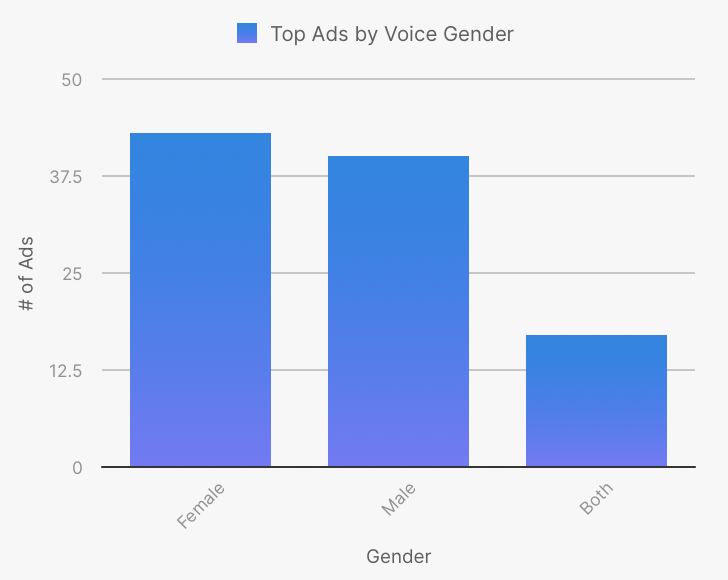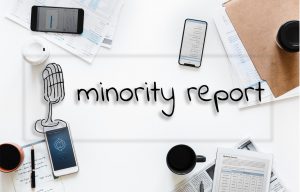With that, what made for the best audio ads in 2019? We ran an analysis of the ad creative (in podcasts, streaming audio and radio) that flowed through the Veritonic Audio Intelligence Platform over the course of the year to find out.
Powered by Machine Listening and Learning (M-LAL™), the platform analyzed thousands of 2019 audio ads — assessing each creative against myriad characteristics, correlating them with second-by-second human response data, and assigning a Veritonic Audio Score. Each score bakes in consumers’ emotional response, the ads’ ability to drive recall, impact on intent to purchase and engagement with each asset.
Brands with winning audio ads included Tommy John, Burt’s Bees, and Vital Farms.
Here are the five key learnings about the top 100 audio ads of 2019:

Leverage female voice
Consistent with a lot of research we did this year (with our friends at Westwood One, for example), data around the power of female voice continues to debunk the long-accepted assumption that consumers prefer male voices in audio ads. While, historically, male voices have been used around 75% of the time in ads, female voices test as well — and often better — than their male counterparts. Analysis of the top ads on Veritonic supports the trend.

Size Matters
In this case, the shorter the better. A strong majority of winning ads were 15 and 30 seconds long. While a few non-standard-length ads (eg, 45 seconds) were tested in the system over the year, only 16 longer-format creatives made the top set (60-second ads). As some of our partners continue to experiment with less conventional, longer formats — many of which we’re seeing in podcasting — we’ll see how these numbers change in 2020.

Don’t muddy ads with too many voices
From smart speakers to the ever-present “host v. announcer” podcast fracas, voice has never been more important. But, as this data shows, there is power in singularity of voice. 2019 audio ads featuring one voice, as opposed to several, brought a focus to those messages that clearly resonated with consumers.

Music isn’t a given for ad success
While melody may make for stronger audio logos (as we demonstrated in our most recent Audio Logo Index), the practice may not always extend to using music in ads. Of the highest-scoring audio ads in 2019, over 75% did not include a music bed, possibly suggesting that the added secondary element may distract from the primacy of the message.

Direct response is a mixed bag
Compared with something like digital display advertising, audio is obviously still a bit challenged when it comes to driving fast, easy conversion. Voice command/commerce will likely start to change that soon (as evidenced by, for example, Pandora’s recently-launched interactive voice ads). In the meantime, 2019 audio ads that included a URL for a listener to visit performed similarly to those that did not.
Happy end-of-year-analysis to all. Look for new kinds of data out of the Veritonic platform in 2020 to help you understand and quantify the most effective way to use sound.




